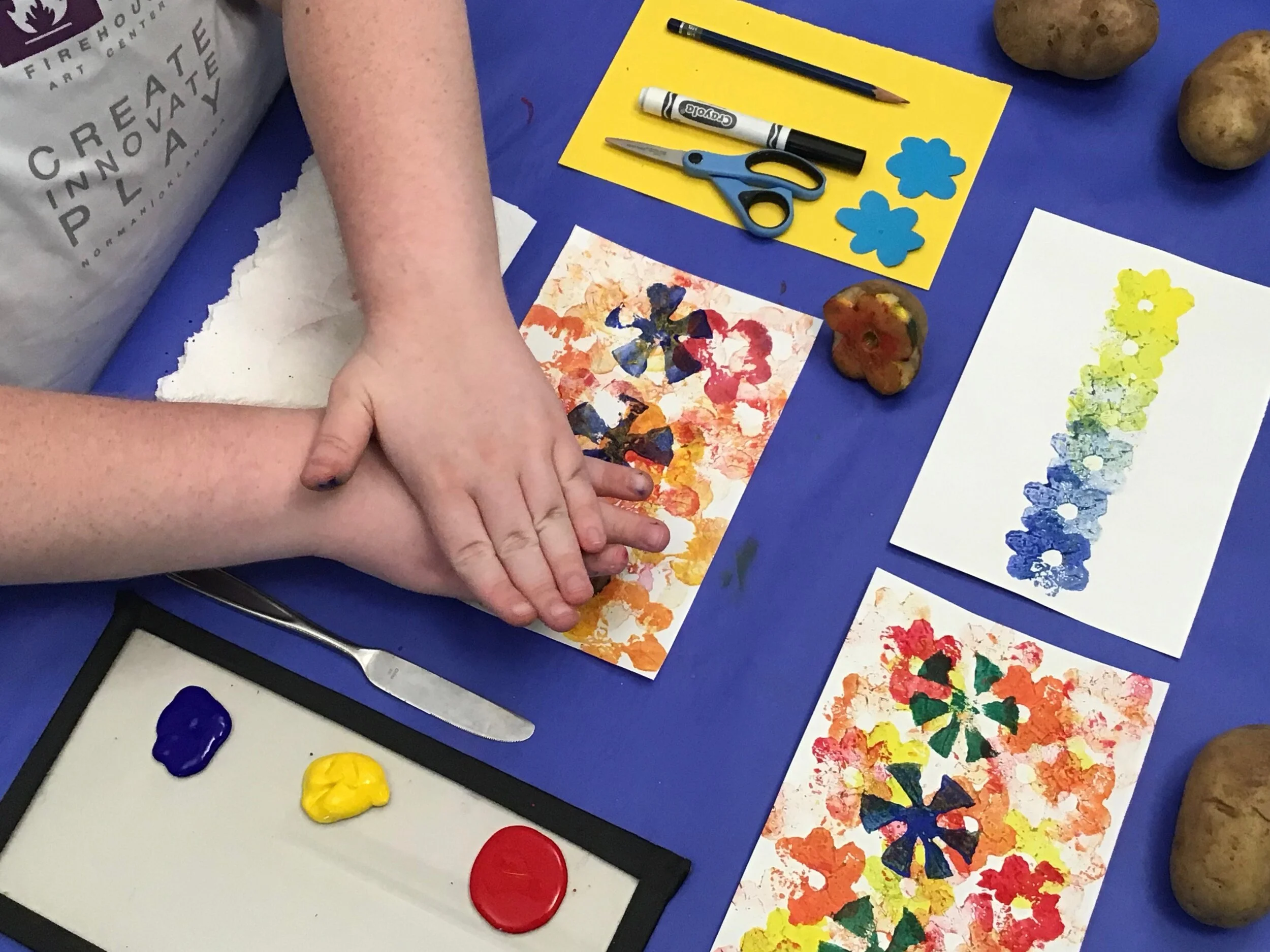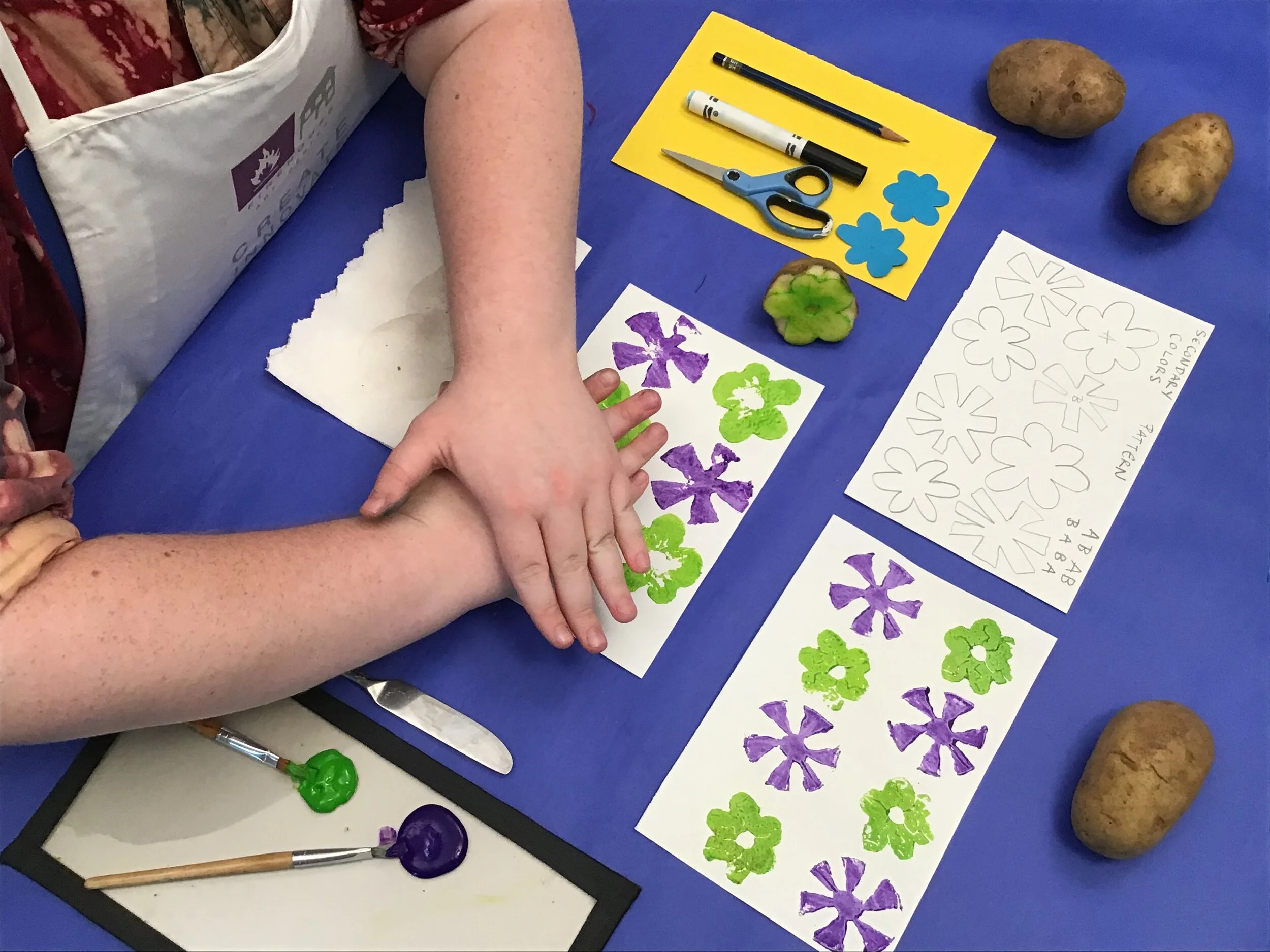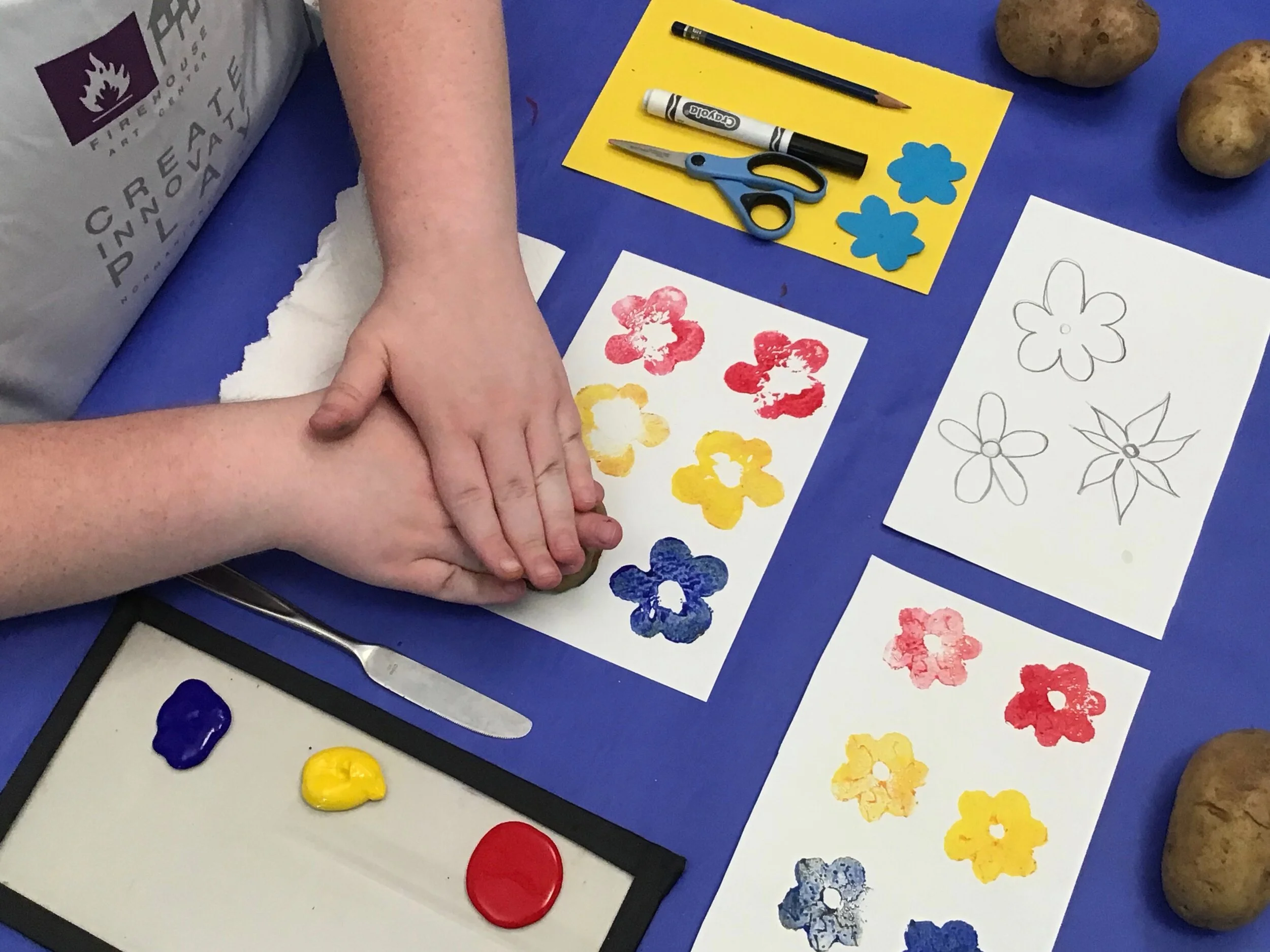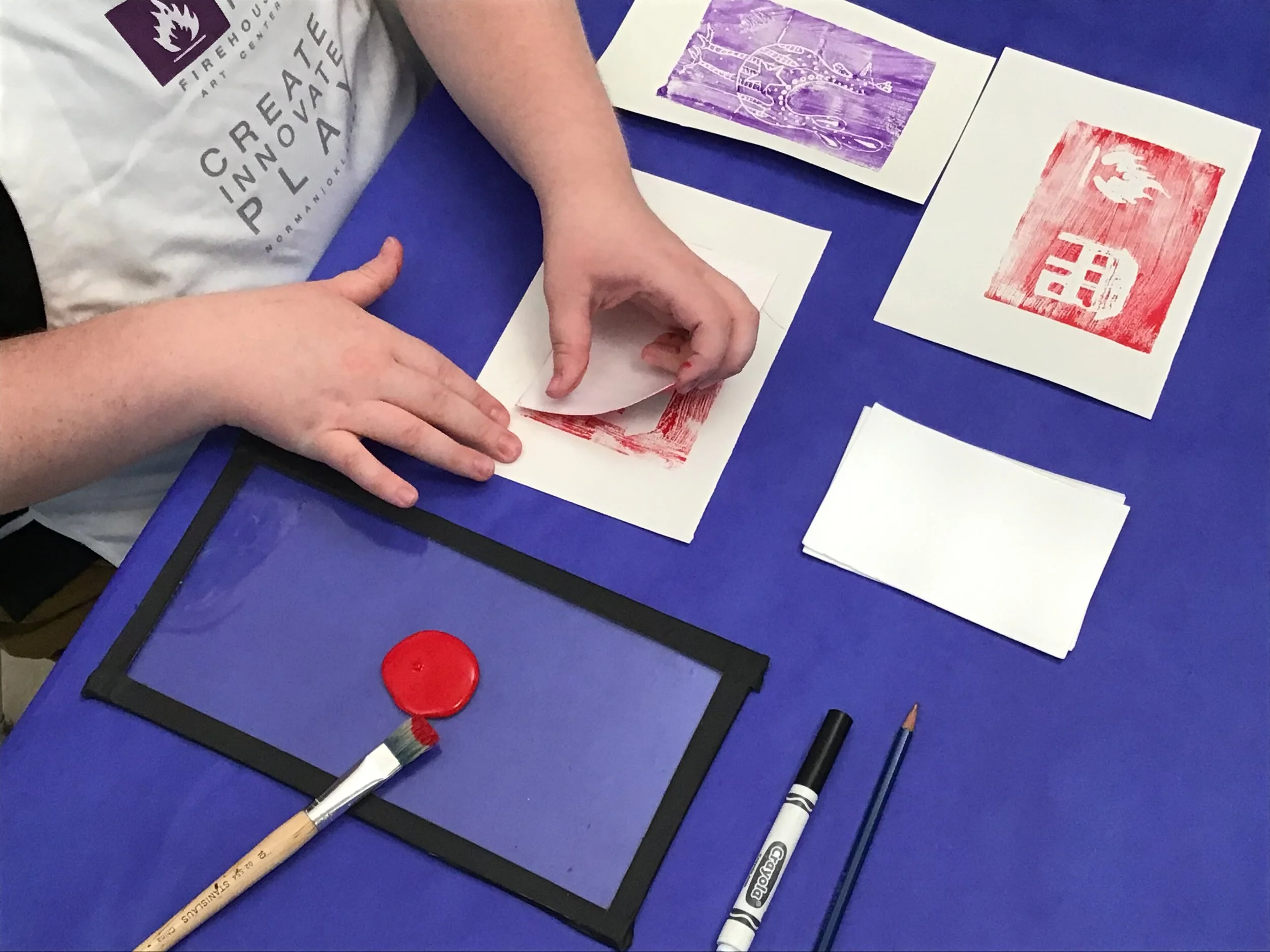Potato Printmaking: Beginners
Summary
Printmaking
In this project, students will use a potato and acrylic paint to create a unique relief print. Relief print originated in East Asia, and was used to create designs for dyed textiles, before being adopted by the west to express a narrative in book printing. Students can look to Otto Dix’s Self Portrait to see how a carved object can be used to create your own unique image.
Essential Terms
Relief print: An image created when ink is applied to the surface of a carved object which is then applied to paper or fabric.
Negative Space: The area around and between a subject.
Positive Space: The subject or areas of interest in an artwork, such as a person's face or figure in a portrait, the objects in a still life painting, or the trees in a landscape painting.
Multiples: Refers to a series of identical artworks.
Stencil: A thin sheet of cardboard, plastic, or metal with a pattern or letters cut out of it, used to produce the cut design on the surface below by the application of ink or paint through the holes.
Objectives
Students will be able to create a carved printing block from a potato.
Students will be able to create multiplies from their potato stamp.
Master Artist / Historical References
Cat and I, Print #1 of 52 in the 1936 Calendar of The Chicago Society of Artists
Age Level(s)
5 - 6 years old
Needed Materials
Potato
Carving tools: paperclip, sharp pencil
Rag or paper towel for drying and clean up
Acrylic paint
Brush
Paper or fabric for printing
Learning Path
Beginner
Intermediate
Advanced
Downloads
Project Instructions (PDF)
Attributions
Virtual Learning Project Developer: Augustine Smith
Curriculum Developer: Tamah Minnis
Step 1
Sketch some ideas for your printed design. Remember the image you carve will be reflected, or mirrored, when you go to print it.
Step 2
Once you have decided what you want your design to be, cut the potato in half and use one of the halves to create an outline for a stencil.
Step 3
Fill in your stencil with the design you want to see on your potato and cut it out.
Step 4
Lay your stencil onto the potato and apply your design to the potato by carving an indented line, either with a sharp pencil or paper clip, around the stencil.
Step 5
Carve around your design using your desired carving tool. The curved end of a paper clip is great for artists not quite old enough for sharp objects. Remember, anything that is carved away will become negative space, or the white of the page, and anything left behind will become your printed image.
Step 6
Pat the surface of the potato dry.
Step 7
Use a brush to apply a generous coat of acrylic paint to your design.
Step 8
Align your potato printing block with your paper and apply pressure for 3 seconds.
Step 9
Remove your potato to reveal your printed image. You can create multiple potato printing blocks to create a patterned printed work, or a print with multiple layers!
Step 2: Cutting Potato
Step 2: Creating Stencil Outline
Step 3
Step 4
Step 5
Step 7
Step 8
Step 9
Bonus Tips
Remember the image you carve will be reflected, or mirrored, when you go to print it.
Use a push pin or toothpick to carve the stencil onto the potato





